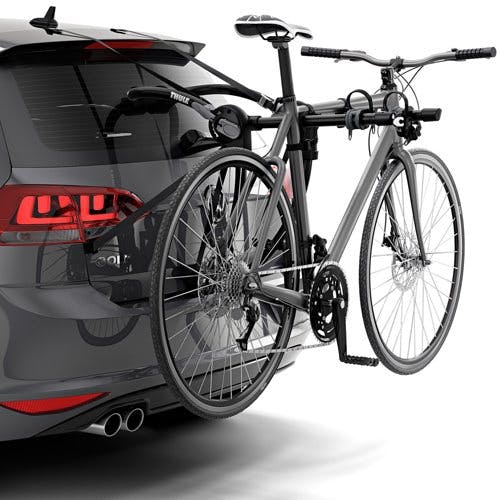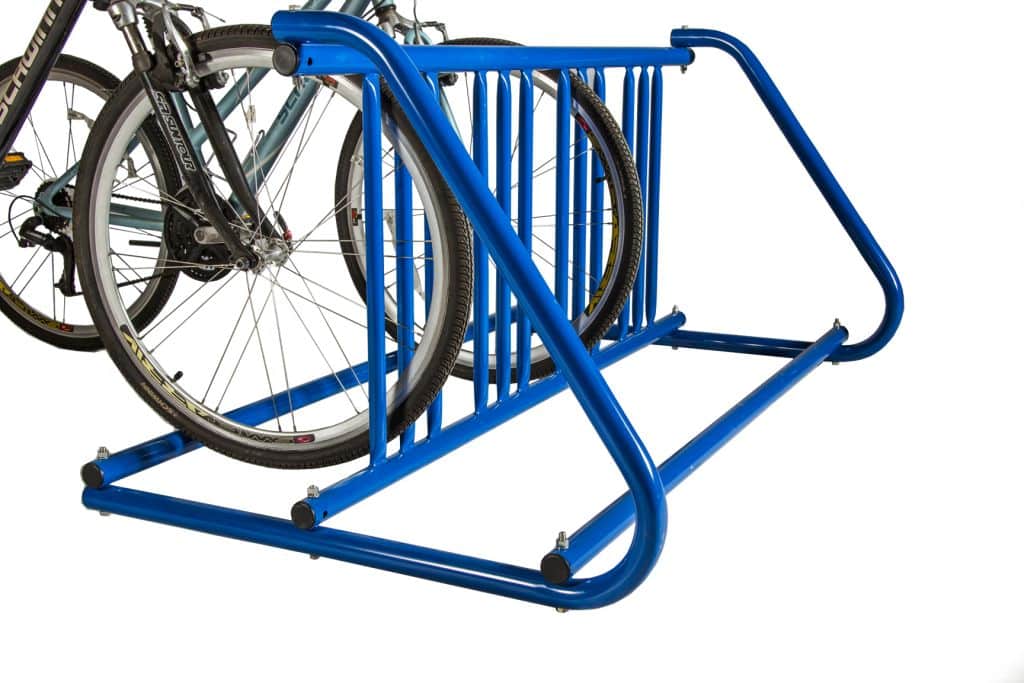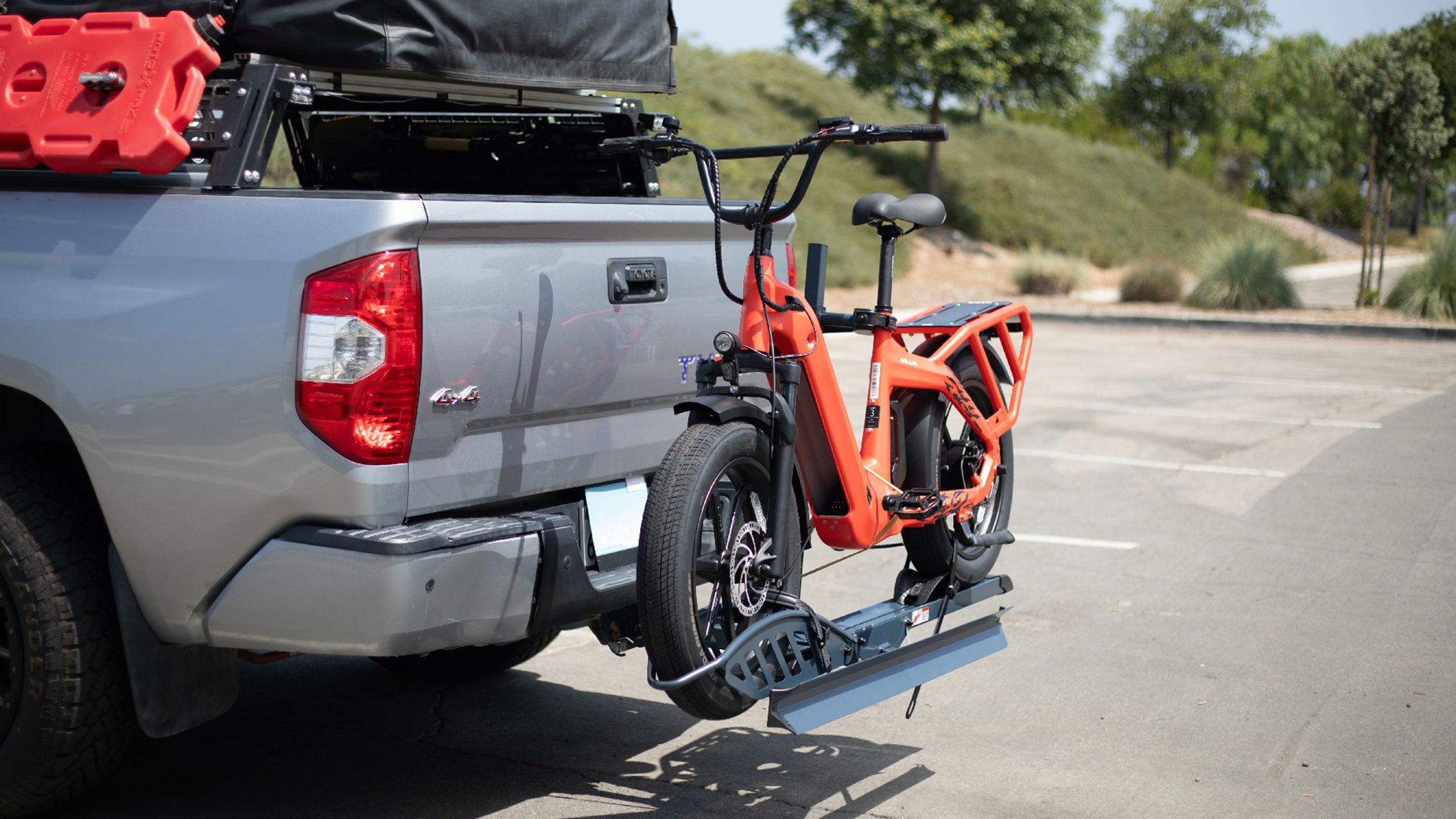How a Hitch Bike Rack Improves Ease for Cycling Teams
Wiki Article
Discover the Various Kinds Of Bike Rack and Their Practical Applications for Cycling Fanatics
The selection of bike Racks available today deals with the diverse demands of biking enthusiasts. From freestanding to wall-mounted choices, each layout provides distinct advantages for storage and transport. Mobile Racks likewise offer adaptability for those on the move. Nonetheless, selecting the ideal type calls for mindful factor to consider of certain demands. Understanding these variables can make a substantial difference in both ease and security for bikers. What are the crucial factors to consider when choosing a bike shelf?Comprehending Bike Rack Types
Numerous kinds of bike Racks satisfy the varied demands of bikers. Among the most typical are freestanding racks, frequently located in metropolitan locations, which enable several bikes to be secured in a compact room. Wall-mounted Racks offer those with restricted flooring area, supplying an efficient option for home storage. In addition, portable bike racks, designed for simplicity of transportation, charm to bicyclists that often travel.
Hitch-Mounted Bike Racks
Hitch-mounted bike Racks use a practical service for transferring bicycles, but understanding their installation procedure is important for effective use. Individuals need to also think about the weight ability of these Racks to assure security and security while taking a trip. In addition, compatibility with various lorry kinds plays a considerable function in figuring out the appropriate rack for individual demands.Setup Refine Introduction
When picking a hitch-mounted bike rack, comprehending the installation process is essential for ensuring security and ease. The user should validate compatibility between the car and the rack's hitch receiver. A lot of Racks are made for either 2-inch or 1.25-inch receivers. After picking the ideal shelf, the installment starts with safeguarding the rack into the drawback receiver and tightening up the hitch pin or bolt to stop activity. Proper positioning is critical to identify the shelf does not obstruct tail lights or permit plates. When set up, it is recommended to inspect for stability by applying slight pressure to the shelf. Following the manufacturer's instructions will ensure an effective setup, promoting a risk-free cycling experience on the roadway.Weight Ability Considerations

Compatibility With Car Types
Picking the right bike rack includes validating compatibility with different lorry types. Hitch-mounted bike Racks are designed to connect to the rear hitch receiver of a vehicle, making them ideal for a wide variety of automobiles, SUVs, and vehicles. It is essential to check the drawback course and weight capacity to verify an appropriate fit. Most hitch-mounted Racks are compatible with 1.25-inch and 2-inch receivers, fitting automobiles furnished with ideal towing capacities. Additionally, users should consider their lorry's height and style, as some Racks might block back accessibility or need added clearance. Eventually, recognizing automobile requirements verifies that biking fanatics can securely transfer their bikes without endangering safety or functionality.Trunk-Mounted Bike Racks
Trunk-mounted bike Racks provide a functional remedy for bicyclists seeking an efficient way to carry their bikes. Understanding the installation procedure is necessary for perfect use, as improper configuration can lead to security issues. Furthermore, thinking about the weight capacity of these Racks warranties that they can safely hold the bikes without threat of damage or failing during transit.Setup Refine Summary
Several cycling lovers value the comfort of trunk-mounted bike Racks for their simplicity of use and versatility. The installation process generally begins with familiarizing and unpacking the rack oneself with its parts. The majority of Racks include flexible straps and hooks made to safeguard them to the car's trunk or hatch. Individuals ought to verify the shelf is located correctly, aligning it with the car's shapes for stability. Complying with the manufacturer's instructions, the straps are then tightened firmly, guaranteeing a tight fit. It is necessary to examine that the shelf does not block the car's lights or certificate plate. Validating that all connections are safe prior to packing bikes is crucial for risk-free transport. Appropriate installation boosts both safety and performance throughout biking trips.Weight Capability Considerations
When thinking about a bike rack for delivering bikes, weight capacity is a crucial factor that can not be ignored. Trunk-mounted bike Racks usually carry weight limitations that differ depending on the model and design. It is essential for individuals to inspect these specifications to ensure they do not go beyond the recommended weight, as doing so can endanger both safety and security and car honesty. A lot of trunk-mounted Racks can sustain a couple of bikes, with a consolidated weight ability ranging from 70 to 120 pounds. Bikers need to likewise think about the weight of their bikes, specifically if they have larger versions like electric bikes. Correctly matching the shelf's weight capability with the bikes' weights ensures a secure and risk-free transport experience.Roof-Mounted Bike Racks
Roof-mounted bike Racks use a structured service for moving bicycles, offering bicyclists with the benefit of taking full advantage of cargo space. These Racks are made to hold bikes safely atop the vehicle, permitting simple access to the back of the cars and truck and protecting against blockages to the license plate or tail lights. They are perfect for individuals who regularly travel with their bikes, as they can accommodate different bike styles and dimensions.Setup usually entails connecting the shelf to the vehicle's bars, making sure a secure and steady fit. Roof-mounted Racks are often wind resistant and lightweight, which can bring about enhanced fuel performance contrasted to various other sorts of racks. Nonetheless, customers need to think about the elevation of their automobile E Bike Rack when packing and unloading bikes, along with prospective obstacles when entering garages or low-clearance areas. On the whole, roof-mounted bike Racks provide a efficient and functional option for serious cyclists on the move
Wall-Mounted Bike Racks
Wall-mounted bike Racks give a reliable remedy for bikers seeking to make the most of minimal room while safely keeping their bikes. These Racks are excellent for metropolitan residents or those with tiny garages, as they boost bikes off the ground and use upright space. Made from strong products, wall-mounted options can suit different bike types, consisting of hill, road, and hybrid bikes.Setup is uncomplicated, making it possible for individuals to place them in garages, cellars, or even exterior rooms. Numerous designs permit for one or numerous bikes, making them functional for individual or family use. Furthermore, some wall-mounted Racks included incorporated locks or protection features to prevent burglary, improving satisfaction for bicyclists.
Portable Bike Racks
Portable bike Racks supply bicyclists a hassle-free and flexible remedy for transferring their bikes. These Racks are created for very easy installment and elimination, making them ideal for those that require to frequently change between areas or cars. Portable and generally lightweight, portable bike Racks can be conveniently saved in a trunk or garage, reducing the concern of long-term installations.There are different sorts of portable bike shelfs, consisting of hitch-mounted, trunk-mounted, and roof-mounted options, each satisfying different automobile types and biker choices. Hitch-mounted Racks offer stability and accessibility, while trunk-mounted Racks are usually extra functional and affordable. Roof-mounted Racks are terrific for taking full advantage of freight room yet may require some lifting.
Choosing the Right Bike Shelf for Your Demands
Exactly how can one determine the very best bike shelf to match their specific biking requirements? Determining the right bike rack involves assessing numerous elements. First, one need to take into consideration the kind of car utilized for transport, as Racks are designed for different installing systems, such as roof covering, hitch, or trunk. Next, the variety of bikes to be lugged is crucial; some Racks accommodate just one, while others can hold several bikes efficiently. In addition, establishing the weight and frame style of the bikes is considerable, as specific Racks are much better suited for larger or distinctly shaped bicycles. Ultimately, desired use should be thought about; regular travelers might like a much more mobile option, while occasional customers might prioritize simplicity and ease of setup. By meticulously considering these considerations, people can choose a bike rack that fulfills their requirements and boosts their biking experience.
Frequently Asked Questions
Can Bike Racks Accommodate Different Bike Sizes and Styles?
Bike Racks vary in style, making it possible for accommodation for various bike sizes and styles. Some Racks include adjustable components, while others are particularly tailored for sure bikes, guaranteeing safe and secure storage and simple ease of access no matter the bike's requirements.Just how Do I Correctly Protect My Bike on a Rack?
To effectively secure a bike on a rack, one should ensure the frame and wheels are snugly fastened using bands or locks, looking for stability and preventing motion during transportation to prevent damage.Are Bike Racks Easy to Set Up and Remove?
Bike Racks vary in installation intricacy, yet many are made for user-friendliness. Removable designs generally use simple configuration and removal, while irreversible installations might require tools and even more time, relying on the certain design.
What Materials Are Bike Racks Normally Made From?
Bike Racks are generally made from materials such as steel, light weight aluminum, and plastic. Hitch Bike Rack. Steel provides durability and toughness, while light weight aluminum supplies lightweight mobility. Plastic choices are typically developed for convenience of usage and priceDo Bike Racks Affect Fuel Efficiency When Driving?
When driving is significant, the inquiry of whether bike Racks influence fuel effectiveness. Research studies indicate that bike Racks can enhance wind resistant drag, potentially leading to reduced gas performance, especially at higher speeds or with added weight.After picking the suitable rack, the installation begins with protecting the rack right into the drawback receiver and tightening up the drawback pin or bolt to prevent activity. Roof-mounted Racks are lightweight and frequently aerodynamic, which can lead to boosted fuel performance compared to other types of shelfs. Hitch-mounted Racks offer security and access, while trunk-mounted Racks are typically extra flexible and affordable. Next, the number of bikes to be carried is important; some Racks suit just one, while others can hold numerous bikes effectively. Bike Racks differ in design, allowing accommodation for different bike dimensions and designs.
Report this wiki page